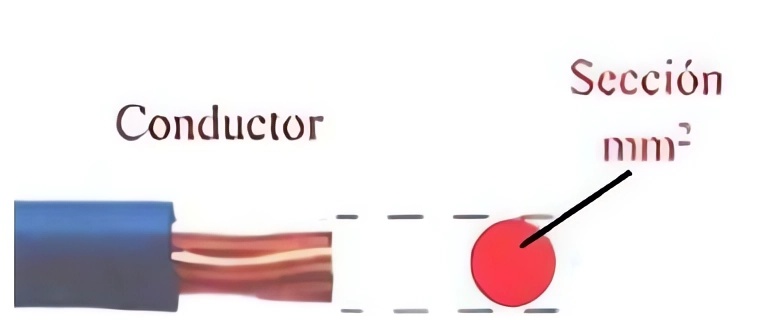AC/DC Power
Electrical cables and conductors: gauges and structure
Electrical cables and conductors are indispensable components in any system involving electricity, including photovoltaic energy systems. Among their most important parameters are gauge and structure.
They are responsible for the transmission of electrical energy to the equipment, but for them to do so efficiently, it’s necessary to consider certain characteristics.
In this article, we will discuss the gauge and structure of electrical cables and conductors. To better understand the terms we will be discussing here.
we recommend reading our post Electrical cables and conductors: general information. Let’s get started!
Gauges of Conductors
From the perspective of electrical conduction, the most important aspect is the gauge of electrical conductors, which is the cross-sectional area or thickness of each one.
In the following image, we show you what we mean by the cross-sectional area of the electrical conductor, which defines its gauge.

The larger the gauge, the more current it can carry with less voltage drop. We will explain the concept of voltage drop in the content we will soon publish titled How to select cables for your installation. It’s sure to be very interesting!
Internationally, this gauge is defined by globally standardized methods known as “gauges”. In the post What are gauges in electrical conductors we explain each of them.
It’s important to know that this gauge is the same for single-strand and multi-strand electrical conductors, as defined below. This is because, from an electrical perspective, the important factor is the total area through which the current will flow.
We clarify this with the following analogy: If you have four 1-inch diameter water pipes, and one gallon of water flows through each, a total of 4 gallons of water will circulate. This volume is the same as what would flow if you had a 4-inch pipe.
Structure of conductors

This refers to the structure of the metallic part of the cable, which can be composed of a single wire or multiple wires. In the former case, it is called a conductor, and in the latter case, it is referred to as an electrical cable.
Specifically, we are talking about the number of “conductive wires” which are also colloquially referred to as ‘strands,’ that make up the said conductor. For example, the conductors in the cables of your home are typically composed of 3 or 7 strands.
However, electrical cables with smaller gauges have a single strand, while high-quality electrical conductors with very large gauges are composed of multiple strands, and they are called “multistrand conductors”.
It’s important to note that specifically for DC power in telecommunications, cables are constructed with many very thin strands to make them highly flexible, but they can be quite expensive.
This construction is done to facilitate their handling. If a very large gauge electrical cable is made up of a single or a few strands, it would be very rigid and difficult to manage.
On the other hand, multistrand electrical conductors are more expensive, which is why smaller gauge cables use fewer strands.
Although we’ve reached the end of this post, we won’t say goodbye without encouraging you to read our next article. It’s titled Calculation of electrical resistance and its variation with temperature in electrical conductors.
We also recommend purchasing the Course on the design of power systems for telecommunications and critical systems .
Where we delve practically into this topic. Click here to see its contents and make your purchase.
Likewise, we invite you to visit our site, energydcac, to stay updated on our news, explore the content we’ve prepared for you. See you soon!

